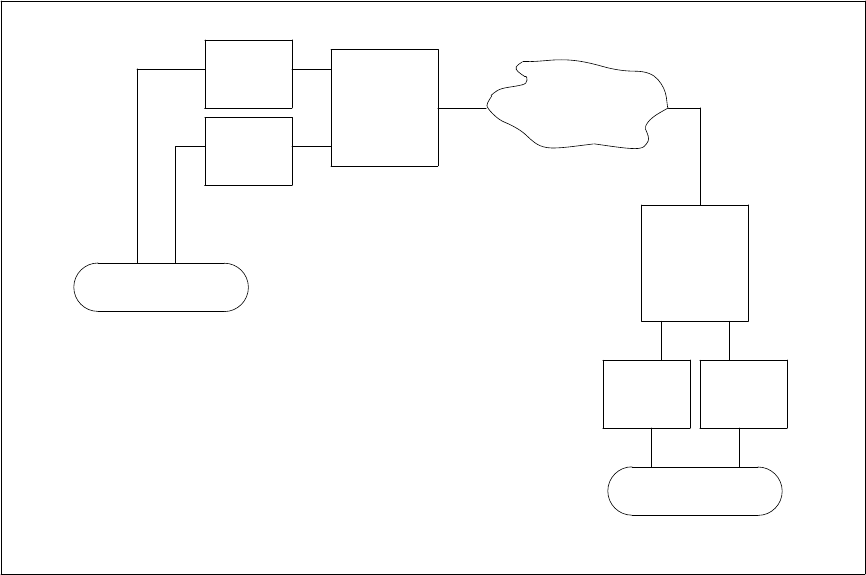Communications System Owner Manual
Table Of Contents
- Table of Contents
- ABOUT THIS DOCUMENT
- 1. INTRODUCTION TO CONNECTIVITY
- 2. COMMUNICATION SYSTEM NETWORKING (em AN OVERVIEW
- 3. TANDEM TIE TRUNK NETWORKS
- 4. MAIN-SATELLITE/TRIBUTARY (MS/T) NETWORKS THROUGH THE UDP OR MULTIPREMISES PACKAGES
- 5. ELECTRONIC TANDEM NETWORK (ETN) THROUGH THE ETN AND PNA PACKAGES
- 6. DISTRIBUTED COMMUNICATIONS SYSTEM (DCS)
- 7. DATA CONNECTIVITY - AN OVERVIEW
- 8. DATA COMMUNICATIONS CAPABILITIES
- 9. DATA COMMUNICATIONS CONFIGURATIONS
- A. RELATED DOCUMENTS
- B. SYNCHRONIZATION OF DIGITAL FACILITIES
- THE NEED FOR SYNCHRONIZATION
- SYNCHRONIZATION HIERARCHY
- CHANGES TO THE SCS SOFTWARE MADE AVAILABLE VIA SOFTWARE PATCHES
- NETWORK SYNCHRONIZATION AND ENGIINEERING
- AVAILABILITY OF SYNCHRONIZATION SOURCES
- CONCLUSIONS ON SYNCHRONIZATION
- USE OF GENERIC 2 AS A SYSTEM CLOCK REFERENCE
- USE OF GENERIC 1 AS A SYSTEM CLOCK REFERENCE
- C. TRUNKING TERMS AND CAPABILITIES
- D. COMMUNICATIONS PROTOCOLS
- E. LEAD DEFINITIONS
- F. NETWORKING FEATURES - AVAILABILITY MATRIX
- ABBREVIATIONS
- GLOSSARY
- INDEX

DATA COMMUNICATIONS CONFIGURATIONS 9-7
_ ______________________________________________________________________________________
_ ______________________________________________________________________________________
_ ______________________________________________________________________________________
SWITCHED
DIGITAL
NETWORK
PICTURETEL
PICTURETEL
ACCUNET
MPDM*
ACCUNET
MPDM*
SYSTEM 75/
SYSTEM 85/
GENERIC 1/
GENERIC 2
DS1
DS1
ACCUNET
MPDM*
ACCUNET
MPDM*
SYSTEM 75/
SYSTEM 85/
GENERIC 1/
GENERIC 2
*Also called MPDM/M1*.
Figure 9-4. A Possible Teleconferencing Configuration
Image Processing
CAD/CAE and medical imaging applications may require the transmittal of an image cross-country. These
applications can use either public, switched (ACCUNET Switched Digital Service or Software-Defined
Digital Network) or private, nonswitched (ACCUNET T1.5 or ACCUNET Spectrum) facilities for image
transmission from site to site. Figure 9-5 shows a typical configuration.
FAX Transmittal
Group 3 facsimile is used for stand-alone and person-to-person communication; while Group 4 — whose
applications include electronic mail, optical character recognition, and document transmittal and storage —
is better suited for computer-controlled network communication. Group 3 FAX is typically sent over the
public voice network and provides analog transmission at speed up to 9.6 kbps; while Group 4 demands
64-kbps ISDN-PRI facilities. The ACCUNET Switched Digital Service or the Software-Defined Digital
Network can provide Group 4 FAX transmittals through their SW64 service. The ACCUNET Packet Service
can be used for these transmittals if a packet assembler/disassembler in inserted in the communications
stream immediately before and after the transmissions are processed through the network. Private,
nonswitched ACCUNET T1.5 or ACCUNET Spectrum facilities can also be used.










